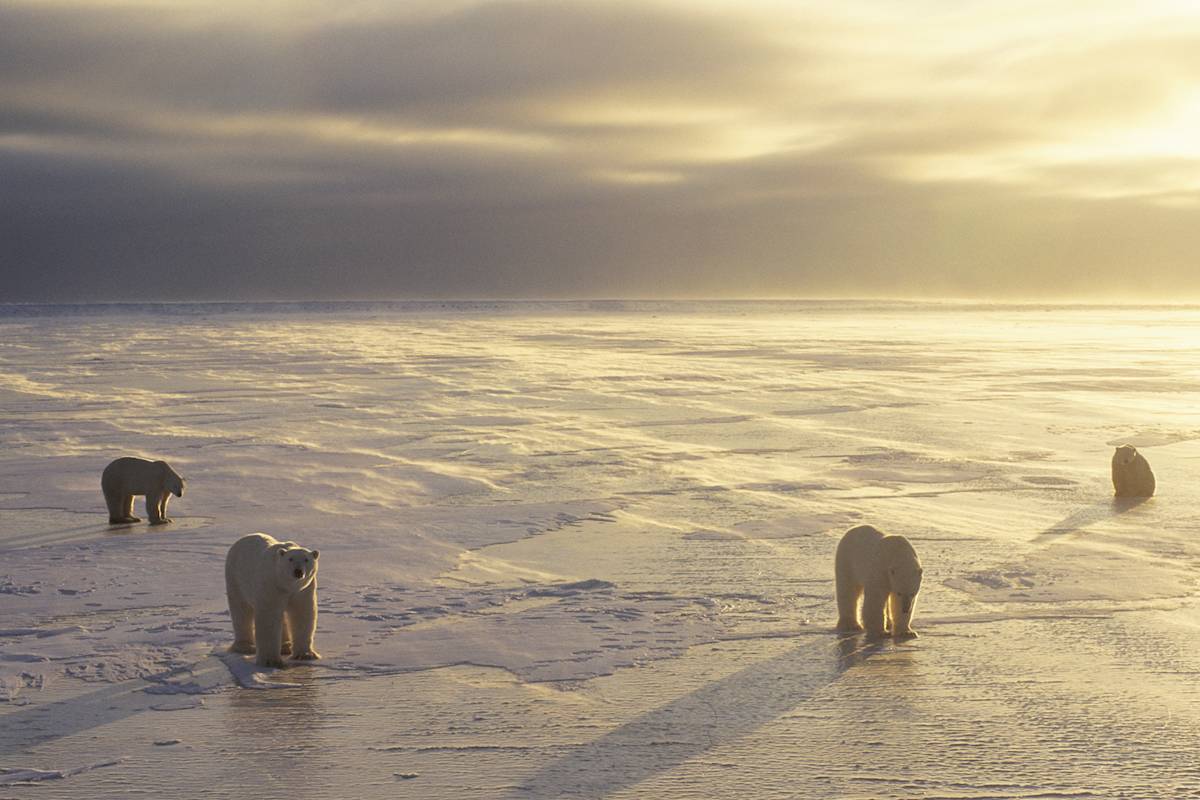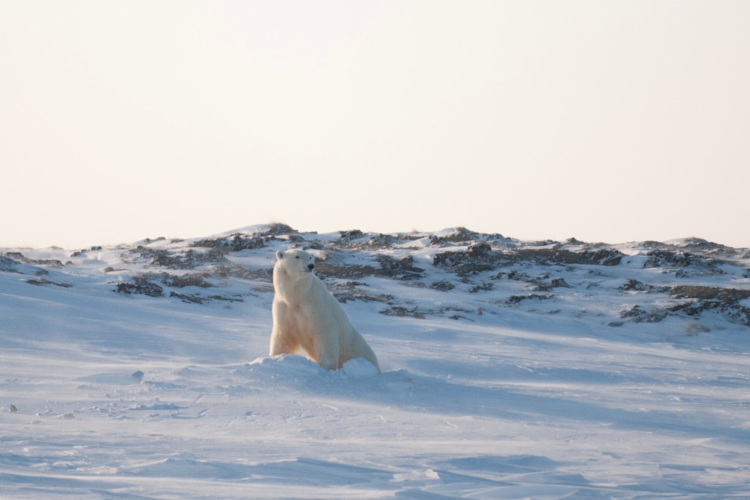Polar bears know no borders. Their home is shaped by the presence of Arctic sea ice, an ecosystem that overlays parts of Canada, Russia, Norway, Greenland, and the United States. Together, these five countries are known as the Polar Bear Range States. Thanks to an international agreement signed in 1973, they are committed to working cooperatively on behalf of polar bears.
The IUCN Polar Bear Specialist Group, an independent group, is also the official scientific advisory body to the Range States. Its members meet every two to three years to share the latest information on polar bears and to collaborate on research and management priorities.
Geoff York, senior director of conservation and staff scientist at Polar Bears International, has served as an appointed member of the Polar Bear Specialist Group since 2009. We spoke with Geoff about the group’s first virtual meeting—held in June 2021—and the primary outcomes.
Q: The in-person Polar Bear Specialist Group meeting was cancelled last year due to the COVID-19 pandemic. How did the group respond and adjust?
A: The Polar Bear Specialist Group was created by the IUCN (International Union for the Conservation of Nature) as an independent scientific body. It is one of the smallest IUCN specialist groups, which leads to it also being a very social group. When COVID cancelled in-person meetings in 2020, it hit us hard. We really look forward to seeing each other in person—both to share information about polar bears and to catch up as friends. Hoping things might get better, we held out for the opportunity to meet in person longer than most. Eventually, the perpetual uncertainty of the pandemic became clear, and we pivoted plans to a virtual meeting in June of this year. Finding an appropriate meeting time across circumpolar time zones was tricky! Our members literally span the circumpolar Arctic, from Russia in the East to Alaska in the West.
Q: This was the first virtual meeting of the Polar Bear Specialist Group. What was it like to work together in an online context?
A: We met for three days online, and as many know, there are both benefits and drawbacks to meeting in this way. Virtual meetings seemed to make it easy for many members to attend, and it also changed some dynamics of participation. I saw more expansive involvement from members and heard different voices through use of the chat window than we might have heard all sitting in one room. The primary drawback was missing the opportunity to connect outside of the formal meetings. Many interesting conversations and collaborations begin over a shared coffee or meal.
Q: What were some of the primary outcomes of this recent Polar Bear Specialist Group meeting?
A: There are 19 populations of polar bears across the circumpolar Arctic—each distinguished by unique demographic processes. The Polar Bear Specialist Group is charged with updating the status for each of these, based on the best available information and research. These status tables are an important tool to many working in polar bear conservation. During the meetings this year, the group strove to establish some long-term consistency in how data is presented in the status table. Additionally, we are working to adapt to modernity and the online age of rapid information. We used to release an update to the status tables ever two to three years, but that cadence no longer feels relevant. Our goal is to move to a place where we can provide these updates annually or as new information becomes available.
On a more technical level, the PBSG also passed resolutions about developing a process for changing population boundaries, researching and managing polar bear tourism, and minimizing human-bear conflict through attractant and waste management.
Q: Information shared at the Polar Bear Specialist Group meetings informs research priorities in polar bear conservation. What priorities stand out to you after meeting with your colleagues in June?
A: A few key priorities surfaced during our discussions. First, the importance of maintaining existing long-term monitoring projects and the associated polar bear populations. Long-term monitoring research is vital to understanding trends and raising alarm bells as necessary, and we only have long-term data for a few populations of polar bears. What we learn from these populations can help us understand what might be going on for polar bears in other parts of the Arctic that are more difficult to observe.
My colleagues also identified the need for innovation in the field. Climate warming is making research in the Arctic more difficult with scientists facing novel and unstable conditions like open water, freezing rain, and early ice melt. As this uncertainty is projected to continue, the group is looking at new ways to acquire information that will, at least, maintain monitoring data going forward. Collecting fecal samples, setting hair traps, and working with different types of imaging in aerial surveys are a few techniques the group is working with and exploring.
Q: Having now served as a member of the Polar Bear Specialist Group for over a decade, how would you describe your experience working with a circumpolar group of experts—from different countries, backgrounds, and cultures—on the shared mission of conserving polar bears?
A: It’s an honor to be included in a group like this and to get to know so many influential and passionate polar bear scientists and managers. A forum where people feel comfortable sharing their ideas, experiences, and unique cultural contexts is healthy for polar bear science and management. We have all seen different slivers of the Arctic and observed different things. The Chukchi region (shared between the U.S. and Russia) has a totally different habitat, conditions, and reality from the Canadian island archipelago … which is totally different from northern Alaska … which is totally different from Svalbard, Norway. The Arctic ecosystem is extremely diverse—we need to hear many different perspectives to build a more complete understanding for what is happening to polar bears and how we can conserve their populations and habitat across the Arctic. When the International Agreement for the Conservation of Polar Bears was signed in 1973, overhunting was the biggest threat to the bears. That risk has been successfully managed but now the bears face an even greater challenge: the loss of their sea ice habitat due to human-caused climate warming. Working together to do all that we can for the bears is a commitment shared by all of us—and I’m proud to be part of that effort.

















